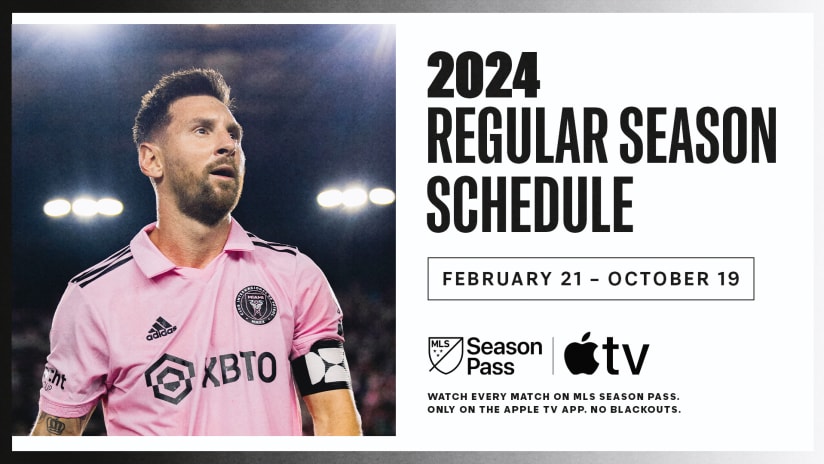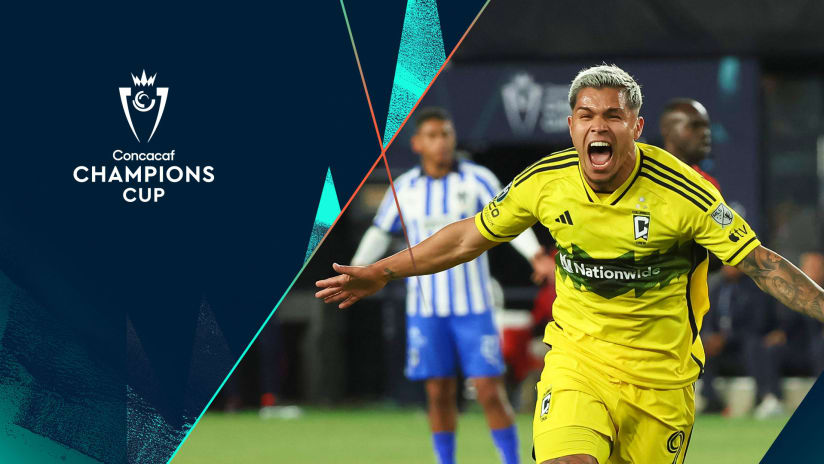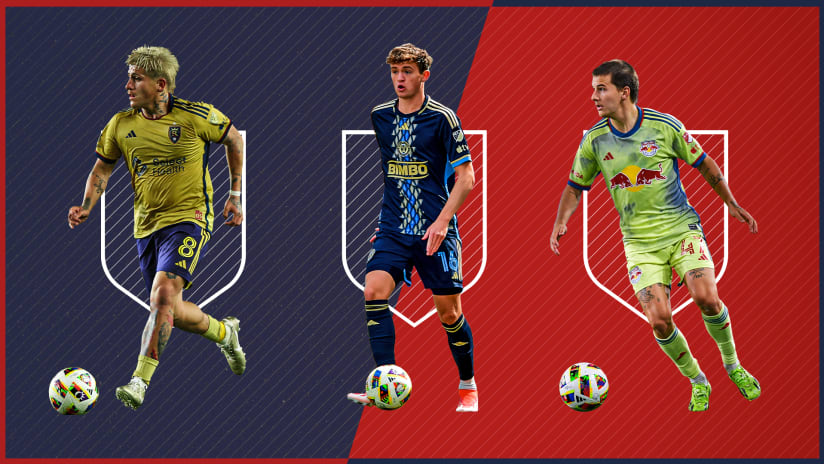Monday marks the beginning of “Food Week” here on MLSsoccer.com. All week, we will present a series of articles and videos that looks at food and its relationship to the beautiful game. The content will include a mix of serious and fun pieces about all aspects of food, including sports nutrition, tailgating tips for July 4 (and beyond), player recipes, restaurants to check out on the road, our favorite stadium snacks, and more.
In the first part of a five-part series on nutrition, we lay the foundation for various nutrition strategies in MLS.
The old wives’ tale notwithstanding, we are not what we eat. But what we eat does fuel the actions that end up defining who we are.
This is nowhere more evident than in sports. Athletes burn more calories than the average person, so they need to ingest not only more food, but also better food, food loaded with particular nutrients and minerals. Because if an athlete’s diet, nutritional intake and general eating habits aren’t right, he may struggle to play up to his potential. Or worse, his performance could actually suffer.
Of course, no club can afford that. So diet and nutrition has become a focal point more than ever for MLS clubs — and players — in the search for every possible competitive advantage. Several clubs have nutritionists on staff and others work with nutrition consultants who devise high-performance nutrition strategies, oversee team meals, and, as is the case at New England, even go grocery shopping with players.
“We educate the players a lot on the timing of when to eat and the type of food they should get,” Chicago Fire strength and conditioning coach Tony Jouaux says. “The players take care of themselves a lot more than ever. Because this is a huge part of their performance, and they understand that.”
The best places to eat in the Eastern Conference
The science of sports nutrition has changed a great deal since the early days of MLS. Back then, the idea of a club having a sports nutritionist was laughable because 1) it was a financial luxury the clubs couldn’t afford, and 2) what was the point? The mindset, in general, assumed that the players’ diets were fine because they were all talented and successful.
Plus, there wasn’t much widely known research on the impact of food on performance outside of the endurance sports world, where triathletes and cyclists tweaked and re-tweaked every aspect of their physical preparation in the hopes of shaving a few seconds or even fractions of a second off their time. In a team sport, that didn’t seem as relevant.
“Back in the late ‘90s or early 2000s, you were instructed to eat a lot of pasta before the games and keep yourself hydrated and that was about it,” says David Tenney, head fitness coach for the Seattle Sounders. “We’re understanding things a little bit better now in terms of macro-nutrient and micro-nutrient needs, the value of proteins and fats. It’s still not finished. There’s still a lot that we don’t know.”
In many ways, the soccer player’s typical nutritional program is predictable. It includes a lot of fruits and vegetables, yogurt, granola, pasta, rice, fish and chicken. And, of course, a lot of water and Gatorade. No desserts.
But as scientists and nutritionists learn more about how the body processes different nutrients and what the benefits of specific foods are, they are adjusting eating plans to be more effective. For example, zucchini’s slow release of sugars makes it ideal as a pregame food. Normal flour pasta will increase the body’s glucose level too quickly, so whole-wheat pasta is preferred. Grass-fed beef and wild-caught fish are better than grain-fed beef and farmed fish because of their better omega-6-to-omega-3 ratio, which aids in reducing inflammation in muscle cells.
The best places to eat in the Western Conference
MLS players today are encouraged and taught to embrace a variant of what is called the “paleolithic diet.” It recalls a prehistoric age when man ate what was available. It consists of fish and grass-fed meat, fruits, vegetables and nuts. Normally, it excludes grains and dairy, but for athletes involved in an endurance sport of any kind, those carbohydrates are simply to precious to skip.
* *
For nutritionists — and all fitness trainers, really — soccer presents particular challenges. Most other sports have specific physical requirements. For example, American football’s short bursts of action demand the players have power and explosiveness. Basketball’s back and forth requires fast-twitch muscles, short sprints and leaping. Marathoners need stamina.
Soccer, meanwhile, is a combination of all of these. Every player on the field (other than goalkeepers) must possess the complete suite of physical skills: quickness, speed, power, endurance.
To adapt to this, MLS nutritionists are increasingly individualizing the players’ eating plans.
“Right now, nutrition is a team thing,” Jouaux says. “But it’s going to be more individualized. We’re going to get better at the calorie intake and the quantity of what players should be taking in. We will know exactly how much they should be eating before and after the game. It will be individualized.”
Already, new technologies allow for more precise calorie-burning measurement, allowing coaches and trainers to monitor how many calories a player uses in a specific training session. That measure can then inform when and how a player should eat to replenish calories and nutrients.
Some individualization is already taking place. Jouaux points to Fire striker Patrick Nyarko, who “can’t sit still after a match,” which means he does not like to eat. Eating as soon as possible after a strenuous workout is an important step in the recovery process. So while most of the Chicago players eat a full meal after the match, Nyarko gets a protein-carb shake or a glass of chocolate milk — “you get proteins in the milk and carbs in the chocolate,” Jouaux explains — right after the match and then he eats a meal two or three hours later.
Tenney goes even further. He points to the difference between Seattle’s steady, muscular center back Patrick Ianni and the quick, energetic striker David Estrada.
Towering header from Patrick Nyarko
“Ianni is more of a protein-based athlete,” Tenney explains. “He’s a power-type guy. If he loads up on pasta every time, he feels heavy and bogged down and doesn’t move well. Estrada is like an endurance athlete and burning so many calories that we get him much more pasta and rice and complex carbs like that.”
Of course, it’s not easy to get an A-type personality in his 20s to adjust something as fundamental and lifelong as his eating habit. For cultural and circumstantial reasons, it’s even harder to effect that change in a soccer player.
“You can get a top-level triathlete to try anything because they know that even 2 percent difference in nutrition and carbohydrate level and glycogen levels will lead to better performance,” Tenney says. “But soccer players are a little less likely to take it on. Because you could have a perfect nutritional strategy, and you still may not play well. So it’s hard for guys to see the link between their nutritional strategies and their play on the field.”
But with the right mixture of patience, diligence and data, it’s not impossible.
“The more you show them that you care about it and the more you talk about it, the more it gets into their mind and they think about it,” Jouaux says. “I’m in my second year with the Fire, and I’ve changed some players. They pay more attention to what they eat.”














